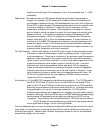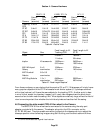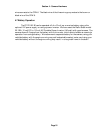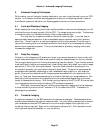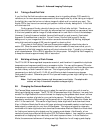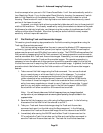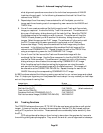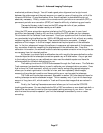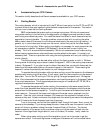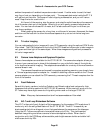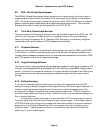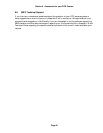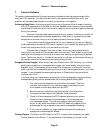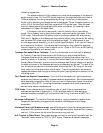Section 5 - Advanced Imaging Techniques
Page 37
mechanical problems, though. You still need a good polar alignment and a rigid mount
between the guide scope and the main scope or you need to use an off-axis guider, with all its
inherent difficulties. A good declination drive, free of backlash, is desirable although not
absolutely necessary. Finally, modern drive correctors with periodic error correction (PEC) or
permanent periodic error correction (PPEC) will ease the difficulty of achieving good results.
The moral of the story is don't count on the CCD autoguider to fix all your problems.
The better the drive, the better results you will obtain.
Using the CCD as an autoguider requires interfacing the CPU's relay port to your hand
controller (as discussed in section 4.4) and then training the CCD system on your telescope.
This is done with the Calibrate Track command. Focus your system and then find and center
on a moderately bright calibration star (1000 to 20,000 peak counts will do) without any nearby
neighboring stars of similar brightness. Then execute Calibration command. It takes a
sequence of five images. In the first image it determines the pixel position of the calibration
star. In the four subsequent images, the software, in sequence, activates each of the telescope's
four correction directions, measuring the displacement of the calibration star. From this
calibration information, the software is able to calculate a precise correction when the guide star
moves away from its intended position.
At the start, you should pick a calibration star with roughly the same declination as the
intended object since the telescope's correction speeds vary with declination. As you get used
to the tracking functions you can calibrate on a star near the celestial equator and have the
software adjust for different declinations for you.
The tracking functions in CCDOPS are accessed through the Track menu. The Calibrate
Track command, as described above, is used to calibrate your telescope's drive corrector. Once
that is done, the Track command, which you would use for autoguiding astrophotographs,
allows you to select a guide star in the field of view, and then repeatedly takes images,
measuring the guide star's position and hence guiding error, and corrects the telescope.
The Track and Accumulate command, discussed in section 3.9.2, also has provisions for
making telescope corrections between images. This is necessary only if your drive has a large
amount of long term drift, which results in Track and Accumulate images that are reduced in
width.
Finally, the Tracking Parameters command allows you to fine tune the CCDOPS
tracking performance. You can deactivate the RA or DEC corrections or even deactivate both, a
feature that can be used to monitor the uncorrected tracking accuracy of your drive. You can
also fine tune the correction speeds if you find the telescope is consistently over or under
correcting.



